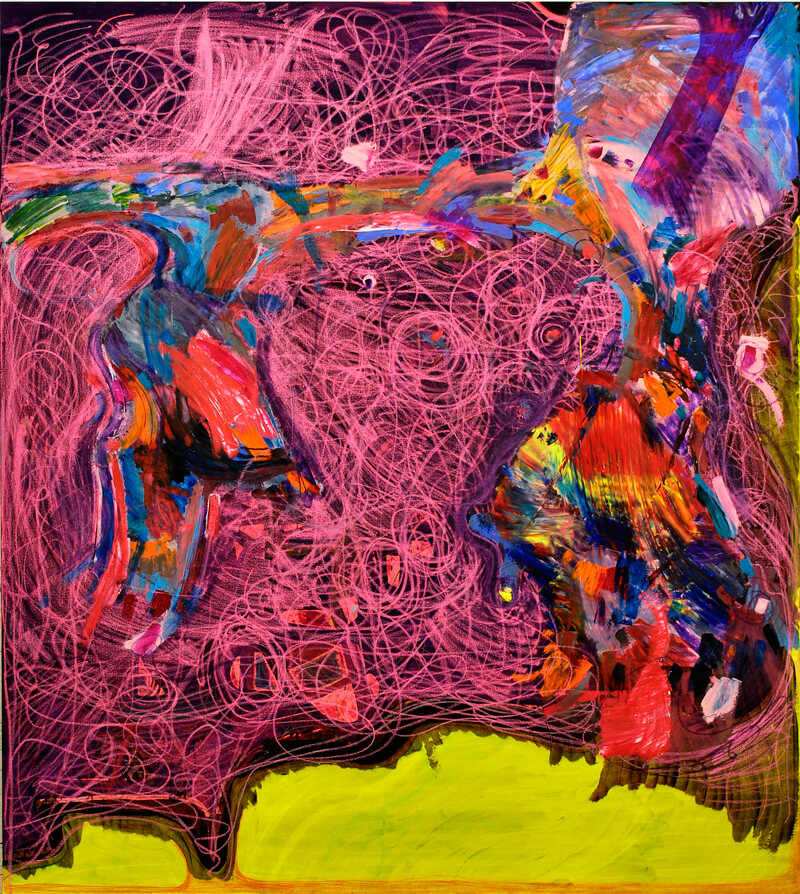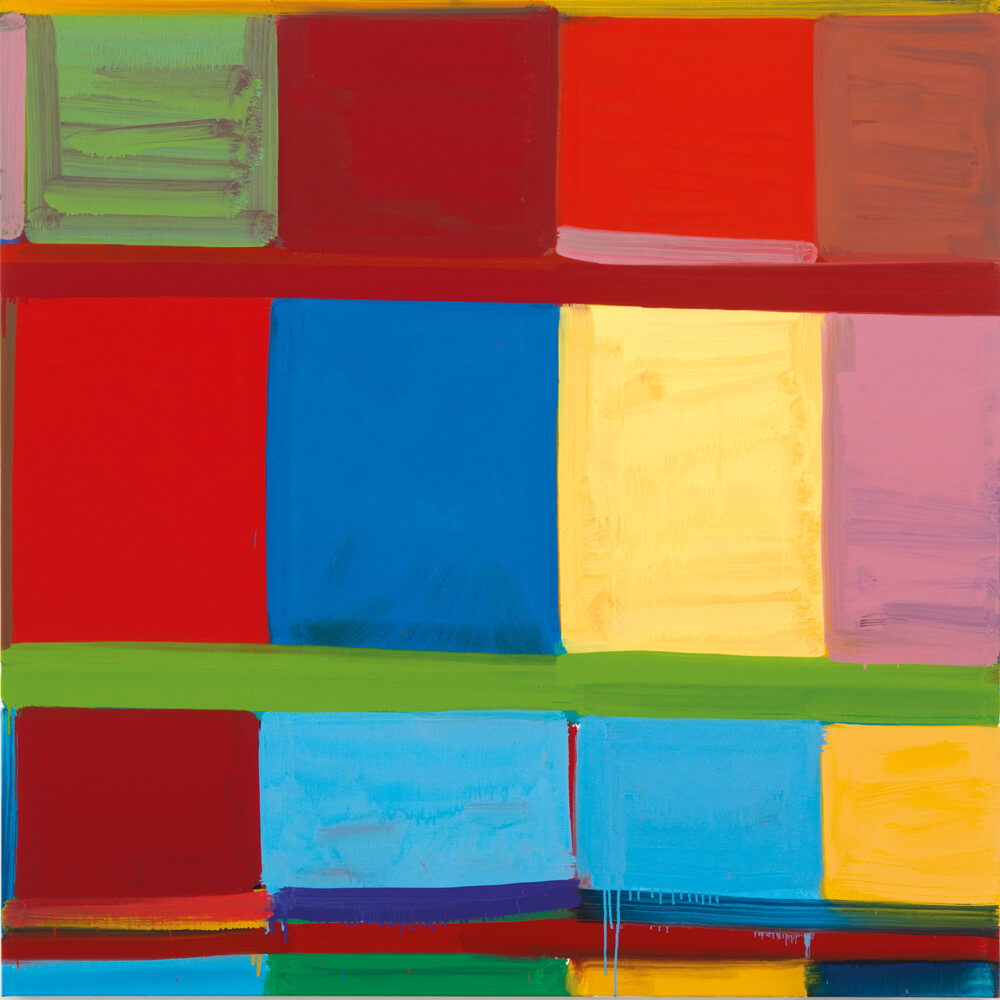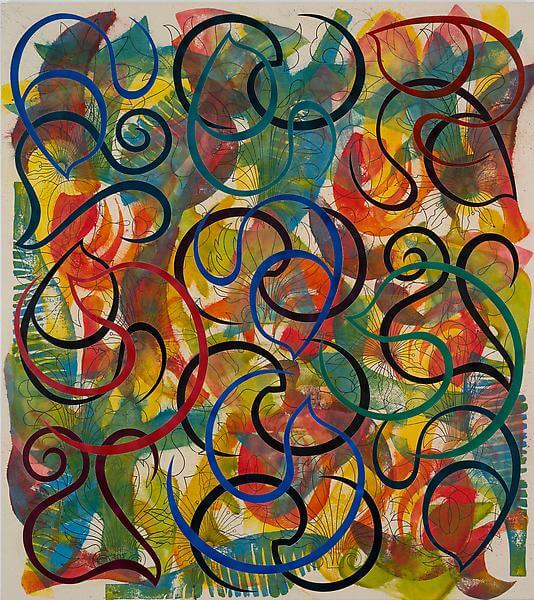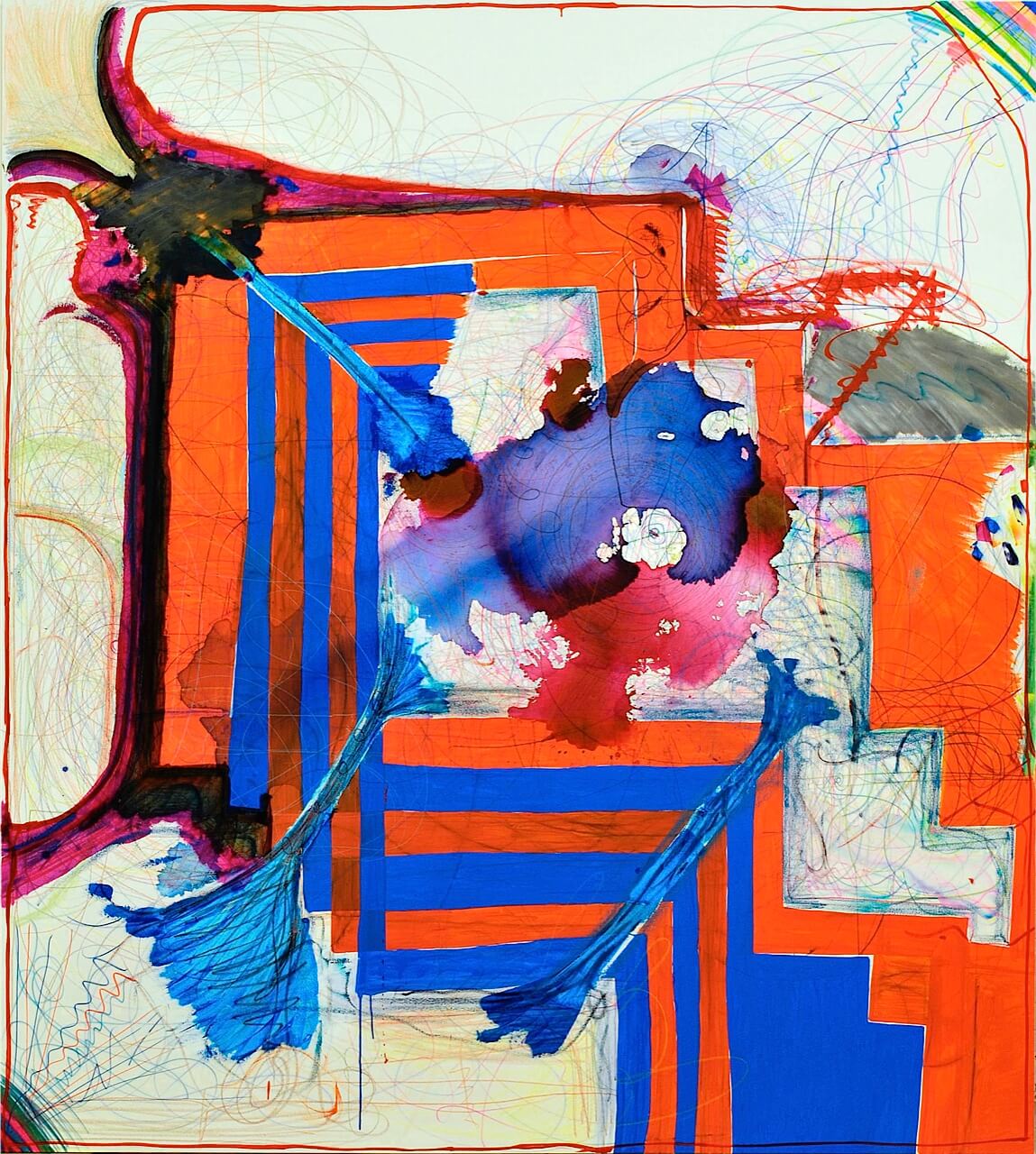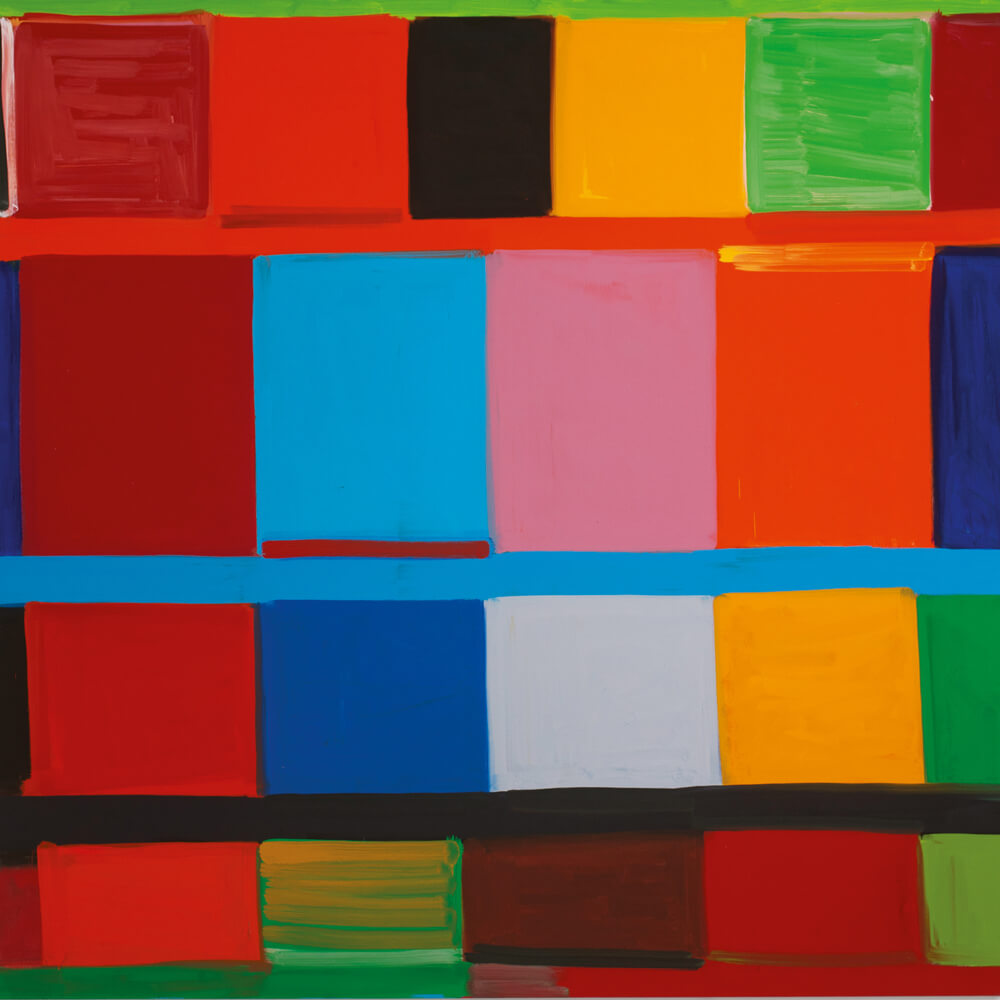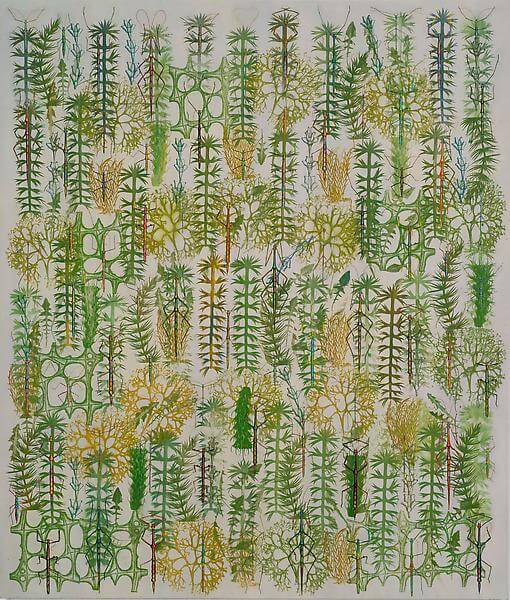The Jewish Museum hosted a recent panel discussion What’s at Stake for Abstract Painting Today – and Where Do We Go from Here?. The panel, moderated by Bob Nickas, included painters Joanne Greenbaum, Philip Taaffe, and Stanley Whitney.
Moderator Nickas addresses what he sees as the ill-effects of the contemporary art market on the quality of contemporary painting, “de-skilled” abstract painting in particular. The artist panelists comment on this, primarily by offering thoughtful insights into the experience they seek through painting. Although each has a slightly different take, they all touch on the themes of authenticity and painting as a worthy, and a necessarily lifelong pursuit.
Greenbaum comments: “I feel that it’s my responsibility to at least try to move abstract painting along… Every time I make a painting I really try and make it new for myself… sometimes the new materials I’ve been using dictate how that painting comes along, sometimes I try to start a painting in different ways… I have a vocabulary and a language that I work with over and over again but it’s always changing.”
Whitney notes that today “there’s a lot of things called ‘painting,’ there’s not one thing called painting… I personally… am still involved with Cézanne. If you’re really involved in the tradition of painting and you really want to get involved in the depth of painting that’s one thing… [but] now painting is opened up to a lot of [other] possibilities… I’ve been lucky that I painted long enough and people were interested, but I took a long time to make those paintings, and I felt that was something I wanted to do, and needed to do, as a painter… but I don’t know if economics, if the world now allows that… it’s very difficult now to paint… we move fast, and painting doesn’t move like that. Painting’s something totally different. The way you get knowledge from painting is a very special, very slow thing.”
Taafe comments: “I’m very idealistic in my approach… and I expect a lot from artists and from a painting. It’s very clear to me after having seen so much over all these years, when a painting is delivering something or not. If you can see the journey that the artist has been on, that they’ve come back with a certain evidence and you want to feel that and interact with it. I believe that painting should be involved with conveying knowledge and emotion and beauty and all kinds of poetic, intellectual energies. I expect that.” Later, he adds that young artists need “to figure out what the culture needs … instead of what the market needs… How do we give something to the visual landscape, to the development of history? … What is the culture going to benefit from?”
If the video does not appear please refresh the page or click here.
